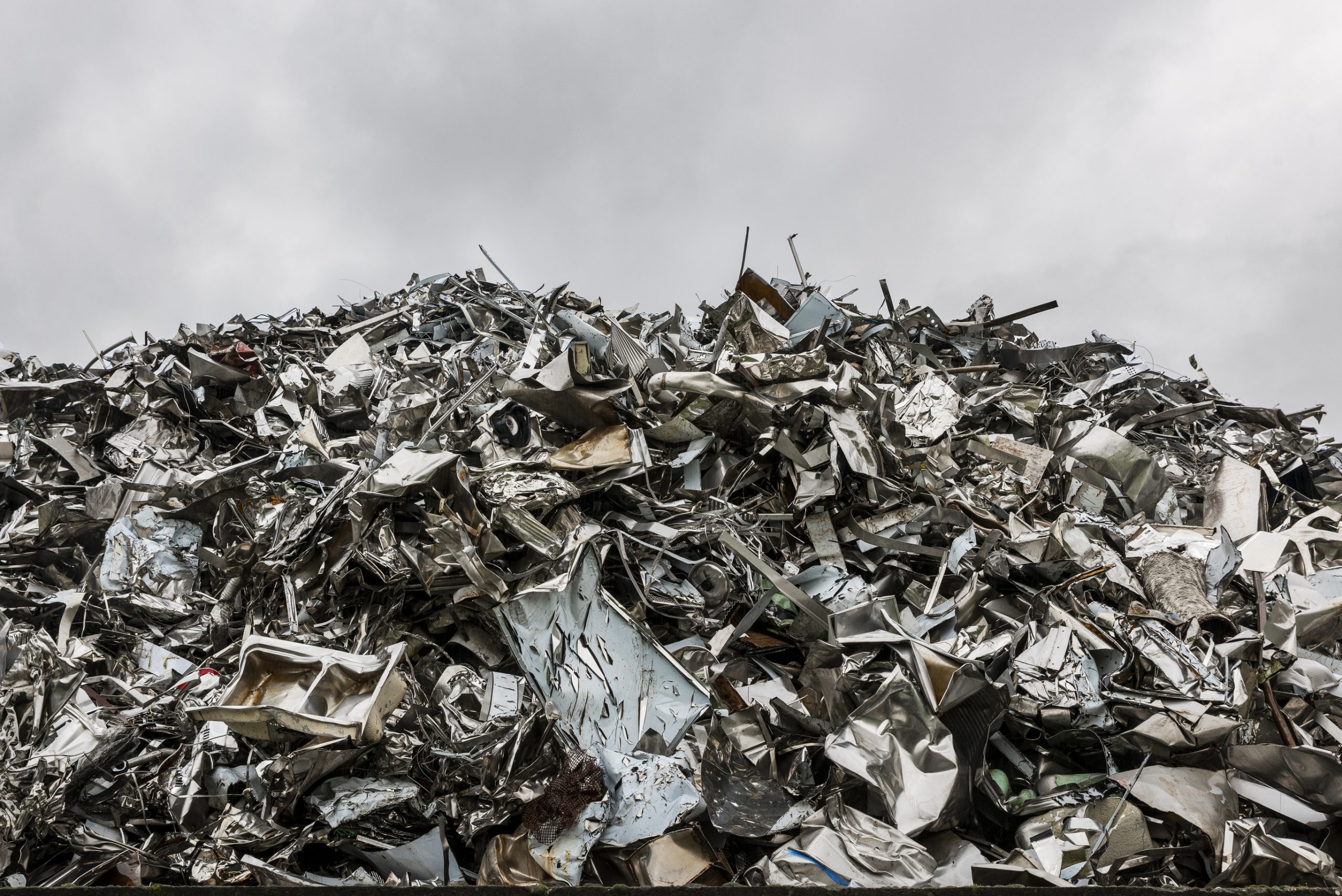By Ellie Gabel, Revolutionized
Paving the way for recycled steel
The birth of stainless steel in 1913 was primarily to improve the metal’s corrosion resistance. This quality made the material valuable and, even today, is its most well-known benefit. However, the addition of chromium and nickel has another crucial advantage — recyclability.
Modern recycling practices can recover more than 99% of chromium from waste streams. As an alloy, stainless steel is similarly recyclable, showing little to no degradation after melting down and re-forming and requiring minimal heat to do so. While this may not be the primary driver of stainless steel’s adoption, it makes it a more environmentally friendly choice than alternatives like aluminum.
The early work of creating and refining stainless steel means manufacturers today can recycle old materials instead of relying on new ore. Thanks to the alloy’s enduring popularity, there’s enough of it to sustain such recycling, too. As a result, energy-intensive mining operations can decrease, leading to more sustainable metal products.
Reducing stainless steel’s energy consumption
Of course, mining is not the only environmental concern around modern metals. Producing these materials often requires a significant amount of energy, which usually means higher fossil fuel consumption. However, the historical evolution of steel has made it increasingly energy-efficient.
The advent of the Bessemer Method in the mid-1800s made it possible to remove impurities with cold air, lowering the required furnace temperature. Many recent innovations follow the same pattern. By finding alternative production methods or adjusting adjacent workflows, steel producers can reduce the amount of energy they need.
Switching to recycled steel instead of virgin material has made a substantial impact here, as recycling requires much less heat. Arc furnaces, which can run on renewable power, are another key innovation. While not specific to the metal industry, Internet of Things (IoT) tracking and artificial intelligence (AI) have enabled further improvements through energy modeling and process optimization.

Driving metalworking efficiency
Similarly, discoveries in stainless steel have made working with the metal — not just producing it — more energy-efficient. In addition to providing it with its namesake anticorrosive qualities, chromium improves stainless steel’s workability. Other additives like nickel have similar effects, allowing manufacturers to create metal products with less effort and reducing energy-related emissions.
The invention of metal 3D printing takes these benefits further. Metals must be able to melt and resolidify quickly to work as a 3D printing feedstock. Stainless steel’s additives make it ideal for this purpose. As the alloy has become increasingly workable with new process improvements, it’s become a viable printing material, reducing production-related energy consumption.
3D printing is additive — it deposits metal instead of removing it. As a result, it’s inherently less wasteful, using up to 80% less material than conventional manufacturing processes. In this way, stainless steel lets manufacturers reduce their environmental footprint through its workability.
Enabling green energy through corrosion resistance
Some environmental breakthroughs in stainless steel come from the material’s inherent properties. Most notably, the corrosion resistance that initially made it ideal for weapons and ships has paved the way for new renewable energy installments.
Stainless steel owes most of its corrosion resistance to its high chromium content. Recent research builds on this original breakthrough by finding new ways of introducing chromium and other additives into the alloy. One method from a 2023 study dramatically increased the additives’ protective properties — enough to use stainless steel for producing hydrogen from water.
Electrolysis often uses materials like titanium, making it difficult to scale affordably, which limits the growth of renewable hydrogen power. Now that stainless steel can achieve the same anticorrosive properties, it offers a more cost-effective alternative. Green hydrogen facilities can use it to reduce costs and expand sooner, making carbon-free electricity more widely available.
Sparking the quest for new additives
Stainless steel’s origins continue to drive other environmental improvements. Today, researchers are finding ways to boost the alloy’s utility by exploring different additives, just as metalworkers discovered how adding chromium improved its corrosion resistance.
Nanomaterials are the most exciting development here. Combining stainless steel with microscopic structures can give it unique properties that open the door to new uses. Many of these applications have sustainable implications.
Some nanomaterials improve stainless steel’s antifouling and anticorrosive properties, making it suitable for electrolysis or as a replacement for more energy-intensive materials in biomedical devices. Others improve its strength-to-weight ratio, letting manufacturers use less of it to reduce material consumption.

Past innovations are driving tomorrow’s results
Modern breakthroughs are often the result of historical groundwork. Stainless steel’s environmental benefits highlight this trend.
The development of stainless steel alloys throughout history has led to unintended discoveries and benefits in other areas today. By building on this early work, researchers are making this material more eco-friendly and fit for the modern world.

